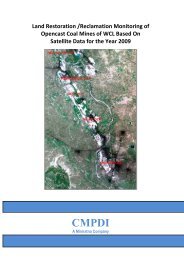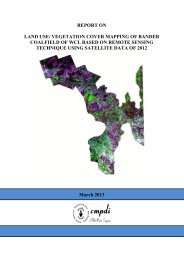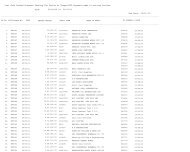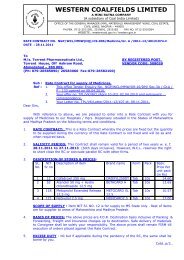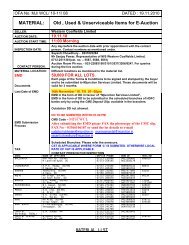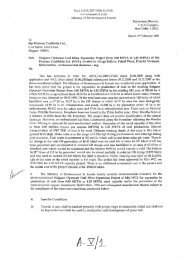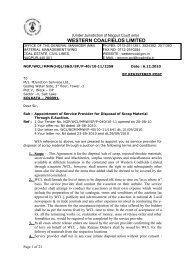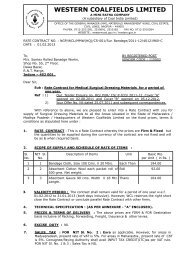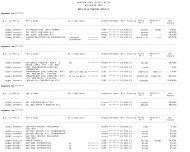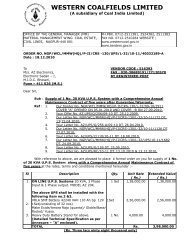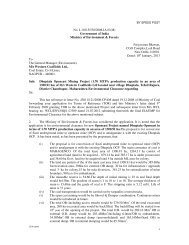pench-kanhan coalfields - Western Coalfields Ltd. India.
pench-kanhan coalfields - Western Coalfields Ltd. India.
pench-kanhan coalfields - Western Coalfields Ltd. India.
Create successful ePaper yourself
Turn your PDF publications into a flip-book with our unique Google optimized e-Paper software.
Job No. 561410027 (WCL) 9<br />
CMPDI<br />
patterns or spectral signatures), both from air-borne and space-borne plat-<br />
forms.<br />
2.3 Scanning System<br />
The sensing device in a remotely placed platform (aircraft/satellite) records<br />
EM radiation using a scanning system. In scanning system, a sensor, with a<br />
narrow field of view is employed; this sweeps across the terrain to produce<br />
an image. The sensor receives electromagnetic energy radiated or reflected<br />
from the terrain and converts them into signal that is recorded as numerical<br />
data. In a remote sensing satellite, multiple arrays of linear sensors are<br />
used, with each array recording simultaneously a separate band of EM<br />
energy. The array of sensors employs a spectrometer to disperse the<br />
incoming energy into a spectrum. Sensors (or detectors) are positioned to<br />
record specific wavelength bands of energy. The information received by the<br />
sensor is suitably manipulated and transported back to the ground receiving<br />
station. The data are reconstructed on ground into digital images. The digital<br />
image data on magnetic/optical media consist of picture elements arranged<br />
in regular rows and columns. The position of any picture element, pixel, is<br />
determined on a x-y co-ordinate system. Each pixel has a numeric value,<br />
called digital number (DN) that records the intensity of electromagnetic<br />
energy measured for the ground resolution cell represented by that pixel.<br />
The range of digital numbers in an image data is controlled by the<br />
radiometric resolution of the satellite’s sensor system. The digital image<br />
data are further processed to produce master images of the study area. By<br />
analysing the digital data/imagery, digitally/visually, it is possible to detect,<br />
identify and classify various objects and phenomenon on the earth surface.<br />
Remote sensing technique (airborne/satellite) in conjunction with traditional<br />
techniques harbours in an efficient, speedy and cost-effective method for<br />
natural resource management due to its inherited capabilities of being mul-



